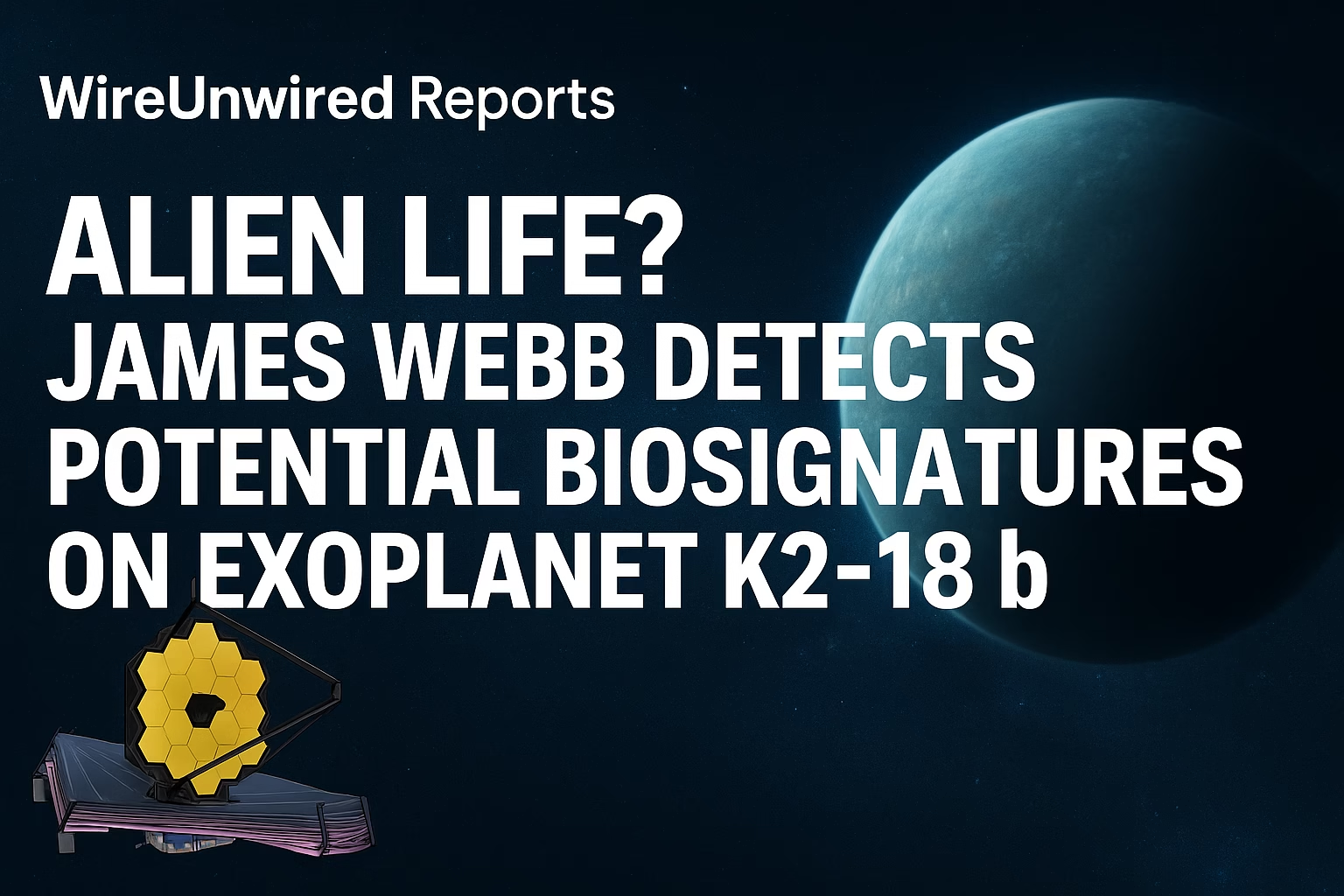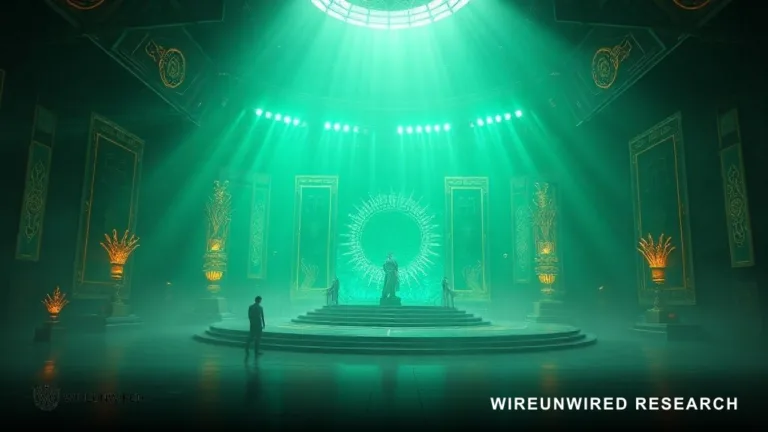Back in 2021, NASA predicted that signs of alien life could emerge by 2025. That timeline might have just proven prescient.
According to a research paper published by Dr. Nikku Madhusudhan on April 16, 2025, in The Astrophysical Journal Letters, he and his team believe they may have found the first signs of extraterrestrial life—or, as many would call it, alien life.
With the help of the James Webb Space Telescope (JWST), the team detected potential biosignatures in the atmosphere of K2-18 b, an exoplanet located 124 light-years away in the constellation Leo.
If verified, this detection could mark humanity’s first step toward confirming that life exists beyond Earth, possibly presenting the strongest proof of alien life we’ve encountered to date, and making the NASA alien life discovery 2025 a pivotal moment in the history of space exploration.
What Did Webb Really See?
Using the unparalleled sensitivity of the James Webb Space Telescope, Dr Madhusudhan’s team analysed the atmospheric spectrum of K2-18 b during its transit in front of its host star. The data revealed traces of dimethyl sulphide (DMS) and dimethyl disulphide (DMDS)—organic sulphur compounds that, on Earth, are almost exclusively produced by living organisms, particularly marine phytoplankton.
“The detection of DMS is significant,” said one researcher. “It is not known to be produced abiotically on our planet.”
Both compounds are considered potential biosignatures, meaning their presence might point toward biological activity. However, the researchers remain cautious. While the signals are strong, they’re not definitive. There’s still a possibility these molecules could form through unknown non-biological processes—especially in an environment as different from Earth as a Hycean world.

Source : NASA Exoplanets
Also detected were other carbon-bearing molecules like methane (CH₄) and carbon dioxide (CO₂), further strengthening the case that the atmosphere of K2-18 b is chemically active and potentially habitable.
What Kind of Planet is K2-18 b?

K2-18 b is what astronomers call an exoplanet—a planet that orbits a star outside our solar system. But it’s not just any exoplanet. It falls into a rare and relatively new category: a Hycean world.
The term Hycean is a blend of “hydrogen” and “ocean.” These planets are believed to have hydrogen-rich atmospheres and possibly global oceans beneath. They’re larger than Earth but smaller than ice giants like Neptune, and their surface conditions—at least in theory—could support microbial life.
What makes K2-18 b especially intriguing is its location in the habitable zone of its star. This is the region where temperatures might allow for liquid water—a basic ingredient for life as we know it.
How is this discovery different from previous ones?
Well, this isn’t the first time scientists have reported potential signs of life beyond Earth.
Back in 2020, researchers using telescopes in Chile and Hawaii had observed phosphine gas in the clouds of Venus—a molecule that, on Earth, is also associated with biological activity. However, follow-up studies questioned the reliability of that detection, and no scientific consensus was reached.
Again, back in 2015, strange light fluctuations from the star KIC 8462852—popularly known as “Tabby’s Star”—sparked speculation about possible alien megastructures. But later analyses pointed to more mundane explanations, such as irregular dust patterns.
Compared to those episodes, the detection of DMS and DMDS in K2-18 b’s atmosphere is more significant in one crucial way: 🛰️ It comes from the James Webb Space Telescope, the most advanced space observatory ever deployed, with a reported confidence level of 99.7%.
That said, scientists remain cautious. They are calling for further observations and data, just as they have with previous anomalies.
To summarise here is a complete list of previous discoveries
| Discovery | Date | Location | Significance |
|---|---|---|---|
| Phosphine in Venus’ Clouds | September 2020 | Venus (Clouds) | Detection sparked a debate, but later studies did not confirm biological origin. |
| Tabby’s Star (KIC 8462852) | 2015 | KIC 8462852 | Speculation of alien megastructures, but natural explanations like dust clouds were later favored. |
| DMS and DMDS on K2-18 b | April 2025 | Exoplanet K2-18 b | Detected by JWST with a 99.7% confidence level, marking it as the strongest proof of alien life yet. |
Phosphine in Venus’ Clouds
Date: September 2020
Location: Venus (Clouds)
Significance: Detection sparked a debate, but later studies did not confirm biological origin.
Tabby’s Star (KIC 8462852)
Date: 2015
Location: KIC 8462852
Significance: Speculation of alien megastructures, but natural explanations like dust clouds were later favored.
DMS and DMDS on K2-18 b
Date: April 2025
Location: Exoplanet K2-18 b
Significance: Detected by JWST with a 99.7% confidence level, marking it as the strongest proof of alien life yet.
Broader Implications
Discoveries like this one remind us that the search for life beyond Earth is no longer confined to science fiction—it is now driven by real data, real instruments, and real possibilities.
The detection of DMS and DMDS doesn’t confirm life, but it validates the scientific frameworks used to search for it. From building better models of planetary atmospheres to developing sensitive instruments like JWST, this moment underscores how far exoplanetary science has come in just the last two decades.
It also brings weight to NASA’s 2021 forecast, which suggested that we might find the first signs of alien life by 2025. As of April 2025, that vision is no longer just hopeful—it’s within the realm of observable reality.
If these biosignatures are verified, K2-18 b may become the first planet outside our solar system where life’s chemical whispers have reached our instruments across the vastness of space. It doesn’t mean we’ve found aliens—it means we may be learning how to listen better.
Discover more from WireUnwired Research
Subscribe to get the latest posts sent to your email.




